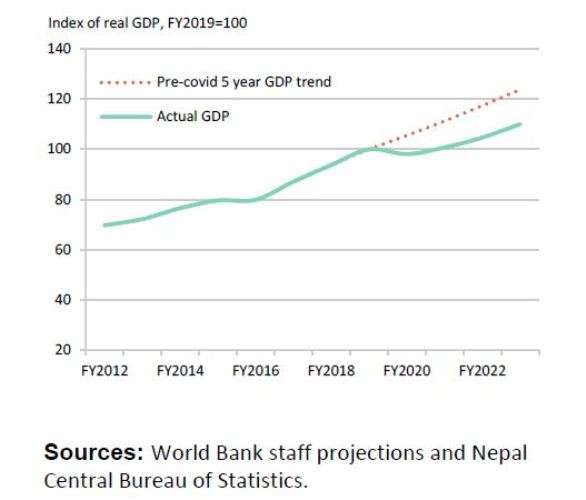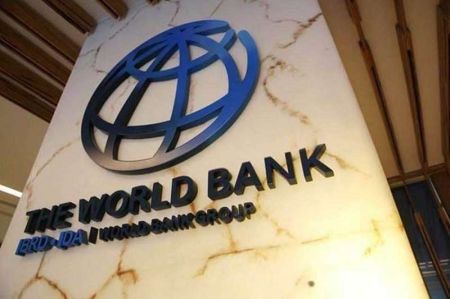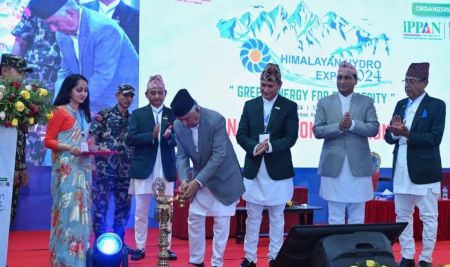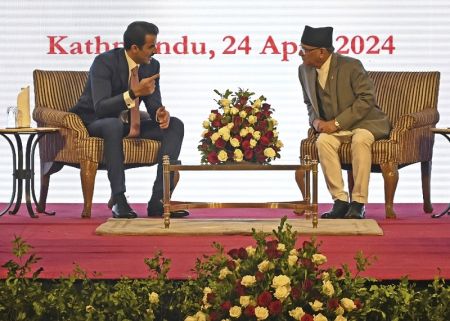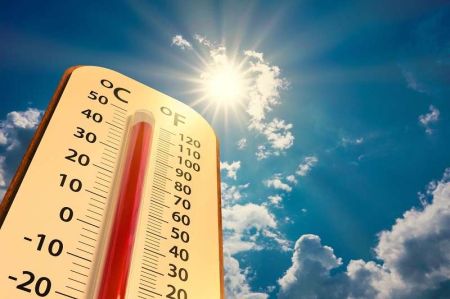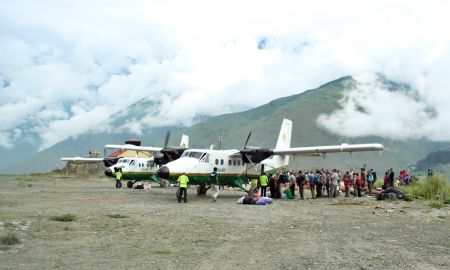March 31:
Nepal’s economy is likely to grow by 2.7 percent in the current fiscal year 2020/21, according to a latest projection by the World Bank.
Releasing the South Asia Economic Focus (SAEF) on Wednesday, the World Bank said that the economy is expected to grow in the current fiscal year after a contraction in the last fiscal year as the Covid-19 related disruptions fade and government relief spending materializes.
The World Bank through its March’s SAEF—a biannual publication providing recent economic developments and a near-term economic outlook for the region—revised Nepal’s growth forecast slightly up by 0.6 percentage point from a projection of 2.1 percent in January.
While the World Bank’s growth forecast is an indication of economic recovery from the contraction of 1.9 percent in the last fiscal year 2019/20, it is way lower than the government’s target to achieve 7 percent of GDP growth in the current fiscal year.
However, the World Bank, in its report, warned that significant jobs and income losses are likely to have increased vulnerability.
“To ensure the recovery is sustained and resilient, policy priorities will need to include: strengthening health systems, supporting agriculture production, and a focus on green, resilient, and inclusive development,” read the report which lifts the growth forecast of South Asia due to efforts to keep Covid-19 caseload under control and swiftly roll out vaccine campaigns.
But, there are still risks which could Nepal's recovery prospects. According to the World Bank’s latest report, downside risks to its outlook stem from new waves of Covid-19 infections and political uncertainties.
“Delays in vaccination and/or new outbreaks of COVID-19 both domestically and globally would dampen prospects of economic recovery. The resumption of tourism would be delayed if international travel restrictions are imposed,” the report stated. “Domestic risks include political uncertainty, which could undermine investment sentiment,” it added.
Agriculture will remain a strong growth driver, thanks to favorable monsoons and continued government investments in irrigation and commercialization, according to the World Bank’s report.
The economic growth in South Asia is set to increase by 7.2 percent in 2021 in South Asia and 4.4 percent in 2022, climbing from historic lows in 2020 and putting the region on a path to recovery, according to the World Bank report. But growth is uneven and economic activity well below pre-COVID-19 estimates, as many businesses need to make up for lost revenue and millions of workers, most of them in the informal sector, still reel from job losses, falling incomes, worsening inequalities, and human capital deficits, the report said.


